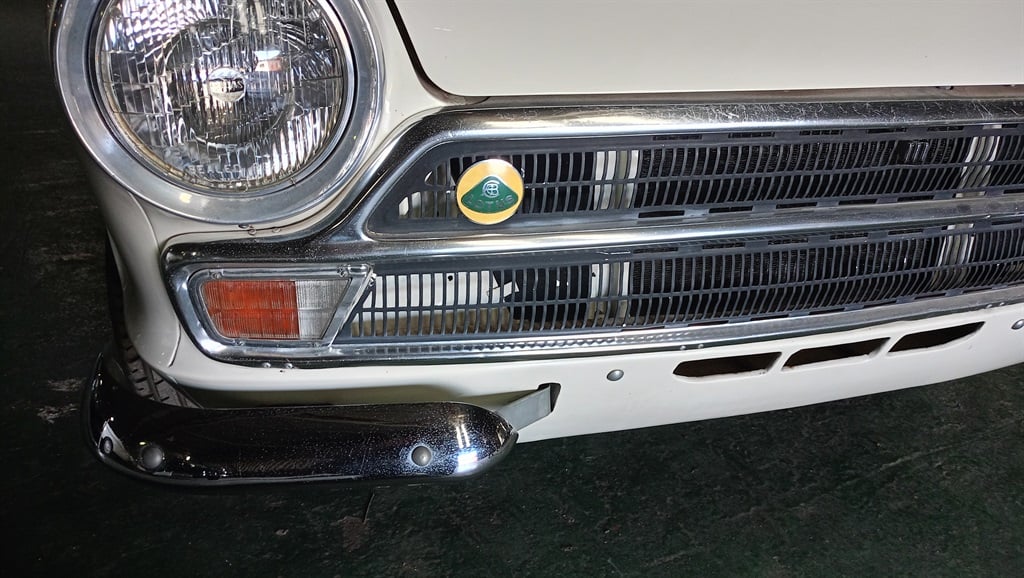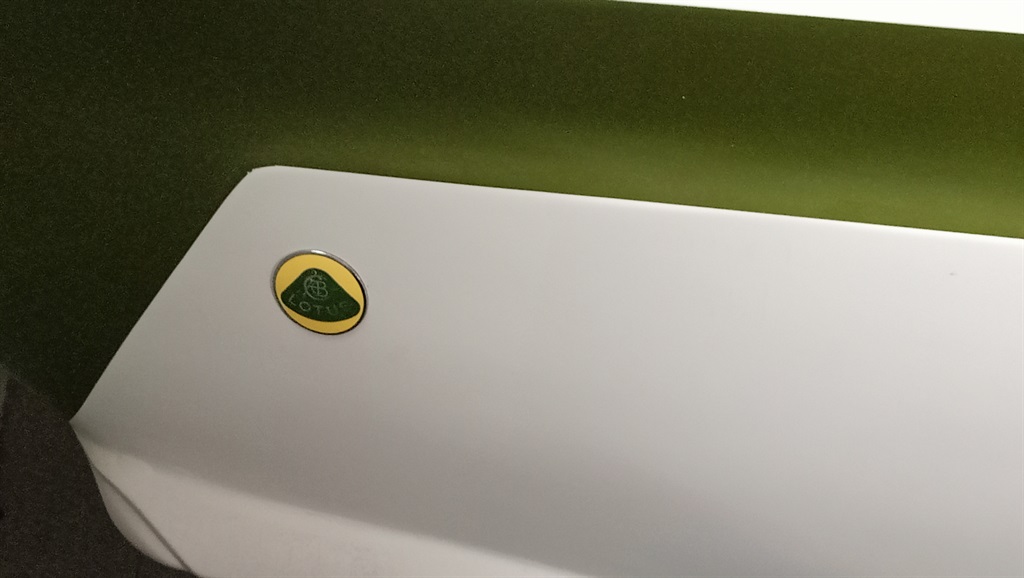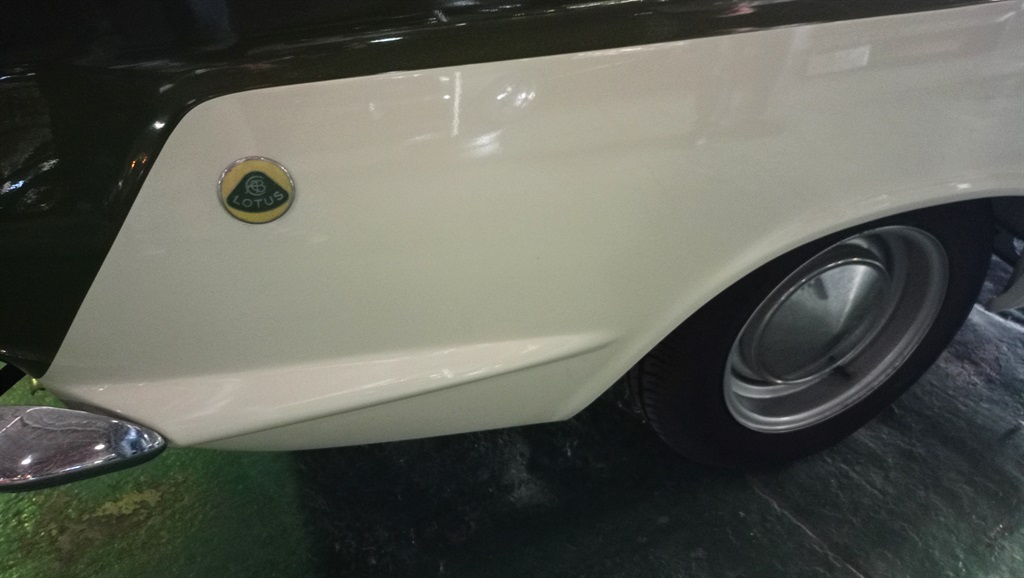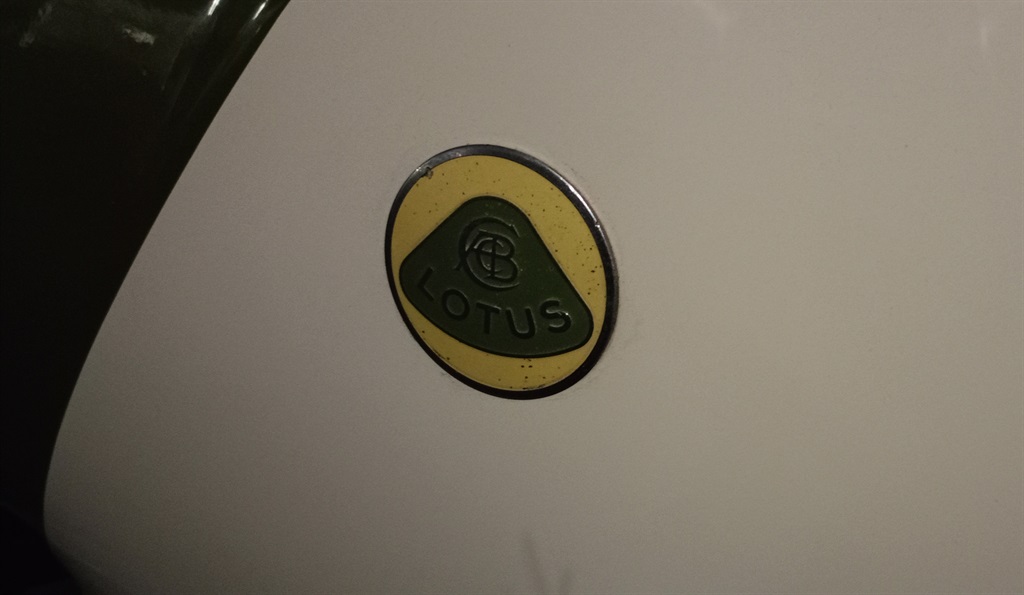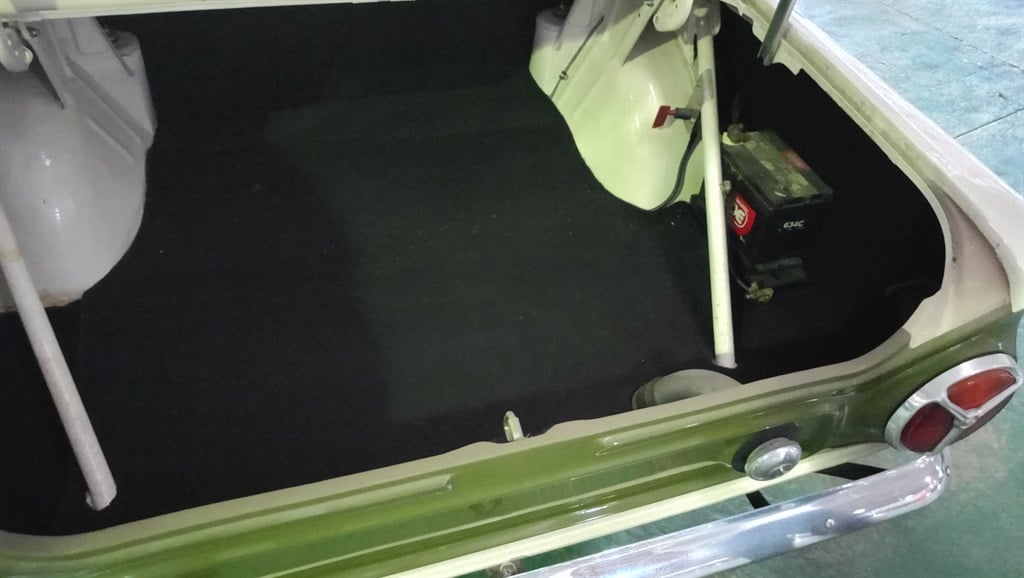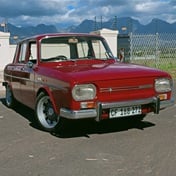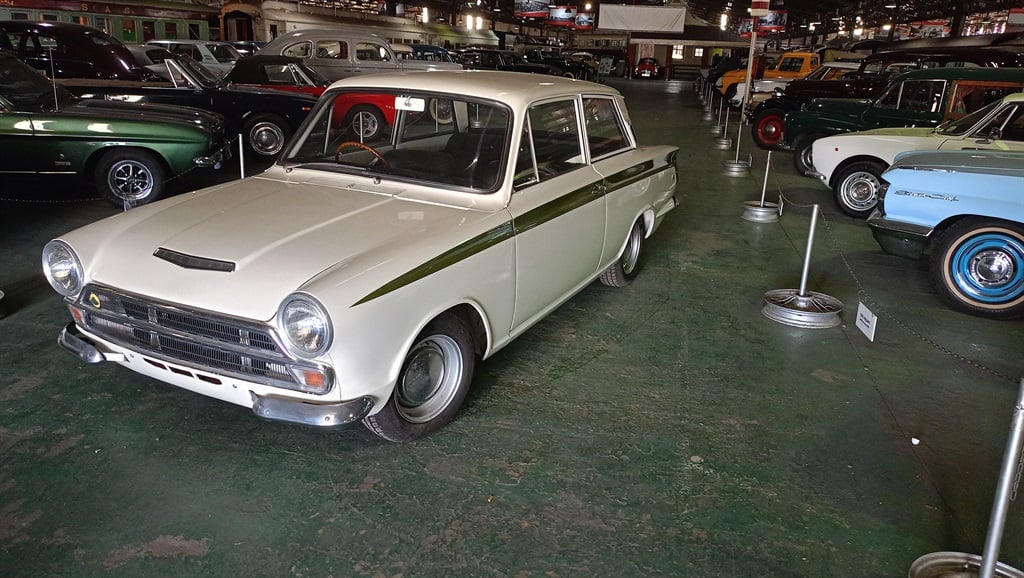
The Lotus Cortina was a car that changed how enthusiasts felt about small Fords in the 1960s. News24 Motoring classic car contributor Stuart Johnston takes us down memory lane with a bit of history about the legendary Cortina.
At the outset of this article, it should be noted that the King of Cortinas was never available for general sale in South Africa. The few genuine Lotus Cortinas that arrived in South Africa after they went on sale in the UK from mid-1963 onwards were private imports or the famous racing examples Ford South Africa imported at the tail-end of 1963.
However, a few enthusiasts in what was then known as Rhodesia (now known as Zimbabwe) took delivery of road-going Lotus Cortinas. In the early 1980s, some of these cars found their way to South Africa. The car pictured here is one such car, a road-going 1965 example once owned by Zimbabwean racer John Amm, who relocated to the Eastern Cape in the early 1980s.
Many years ago, this car was bought by Richie Jute, a highly accomplished racing driver who made his name by creating the best performance camshaft profiles in the tuning business for several decades. Richie did a complete restoration and still owns this all-original, immaculate car, which for the past few years has been on display in the Outeniqua Transport Museum in George.
Getting back to the 1960s, Ford South Africa had bought into the worldwide Total Performance programme that Ford had launched a year earlier, with a big focus on motor racing.
The two white Lotus Cortinas that took to the South African tracks in early 1964 were the special Group 2 competition models built by Lotus in the UK. They were presented to Basil van Rooyen, his Superformance race team in Johannesburg, and the Meissner racing team in Cape Town. Basil did the driving duties in his car while tuning guru Willie Meissner entrusted his vehicle to Koos Swanepoel, who had done amazing things with modified Ford Anglias up to that point.
There was at least one other Mk I Lotus Cortina example in South Africa at this time. Nick Kingwill, hitherto an accomplished Alfa Romeo pilot, raced his Lotus Cortina late in 1963 at Kyalami, and this was possibly the first to arrive here, as the official UK launch for the Group 2 Competition-spec Lotus Cortina was only in September 1963. That Kingwill appearance was a one-off that up-staged the Ford factory-sponsored effort for 1964.
The two official Ford racing imports were believed to be backed up by two spare Lotus Cortinas, shipped here in case spare parts were needed during a big shunt or a major mechanical blow-up. The whereabouts of the five cars mentioned above are unknown to this day, although there are a few examples of genuine Mk I Lotus Cortinas known to exist in South Africa and a couple of the later box-shaped Mk II cars.
As for road-going Lotus Cortinas, they were the landmark examples of an all-out effort by a significant manufacturer to turn an "ordinary" car into a desirable racer-for-the-road. True, the Mini Cooper pre-empted this by a year or two. However, compared to the Lotus Cortina, the Cooper (and later Cooper S) modifications to the bog-standard Mini were rudimentary compared to the Lotus Cortina's production specification.
The Lotus Cortina may have looked pretty much like a Mk I Cortina with stripes and a blacked-out grille, but in truth, there was an awful lot of re-engineering under the skin.
The key component was the engine. It was based on a Ford five-bearing four-cylinder block designed for the Cortina 1500 Super and GT models launched just before the Lotus came on stream. Being privy to Ford's future production plans, Lotus chief Colin Chapman had already developed a 1 558cc version of this engine for his Lotus Elan sports car, fitting it with a twin cam cylinder head and dual Weber 40mm side-draught carburettors.
After an approach from Ford's competitions chief Walter Hayes, Chapman agreed to slot the engine into the Cortina, which had yet to be launched. Early testing of the power trains took place in a rather ratty Ford Anglia!
The Lotus Ford four-cylinder engine was an instant classic and in road-going form, produced 105 horsepower, a 25% increase over the stock Ford Cortina 1500 GT engine. The Lotus-massaged unit was mated to an Elan-spec close-ratio gearbox for the Cortina project.
The biggest engineering change was the location of the rear axle.
Chapman replaced the simple leaf springs with an A-bracket mounted on top of the diff, twin radius arms and a dual coil spring and damper arrangement. This new suspension gave a much lower ride height, and the front MacPherson struts were also shortened to suit, Special control arms were manufactured to reduce the positive wheel camber and lower the front end appropriately.
To reinforce the body, strengthening struts and other bracing were incorporated into the boot area and behind the rear side panels. The battery was also relocated in the boot for better weight distribution, and a brake booster was fitted, along with disc brakes. The steel doors, boot and bonnet were replaced with much lighter aluminium items, and the front bumper was swapped for a pair of quarter bumpers sourced from a Ford Anglia van.
The wheels were replaced by wider 5.5J steel items with chrome hubcaps, and the finishing exterior touches were olive green side flashes, yellow and green Lotus badges on the grille and on the flanks beneath the side flashes, and a trademark matt black grille. The standard body shell colour was Ermine white, and almost all Lotus Cortinas were painted in this colour scheme.
Ford produced the bodies, which included the special reinforcements, and these were delivered from the main factory in Dagenham to Lotus in Cheshunt to fit all the special bits. The new car was announced as early as January 1963, but it was only by mid-1963 that finished production cars began trickling off the Lotus production line. By the end of 1963, production was said to be at five vehicles per week.
The interior featured a special Lotus dashboard with 140m/ph speedo and an 8 000rpm rev counter and auxiliary gauges for water temperature, oil pressure and fuel. The early cars had special bucket seats, but later on in production, Cortina GT bucket seats were fitted. The interior was given a special aura by the fitment of a wood rim steering wheel with a Lotus badge in the centre and a Lotus wooden gear knob.
The gear shift was a specially designed remote system surrounded by a neat bespoke console.
The road cars were quick for their time, with a 0-100 km/h time of around 10 seconds and a top speed of just over 170km/h. This is compared to the top speed of the Cortina GT of 147km/h and a 0-100km/h time in the mid-13-second bracket.
Those early Lotus Cortinas were indeed exciting, but they gave lots of problems initially, mainly thanks to the over-complex rear axle location system, which imposed such loads on the diff that it caused them to crack, leaking oil with disastrous warranty results. Owners also complained about how easily the alloy doors, boot lid and bonnet were dented. After several years of warranty claims, the special A-arm-plus coil spring suspension reverted to good old leaf springs, and steel replaced the aluminium body bits. Some owners even felt that the car handled better with the leaf-spring system!
I have driven an original Lotus Cortina, and it made all the right noises from its twin-cam, Weber-fed engine. It was impressive for its time, being a shade quicker than a 1600 Alfa Romeo Giulia Super on acceleration. Both cars had similar top speeds, and the Lotus Cortina was instantly accepted as one of the most desirable small cars on the planet.
But it was on the race tracks that the Lotus Cortina really strutted its stuff. Ford's "works" cars eventually produced well over 160bhp (119Kw). In 1964, Jim Clark won the British Saloon Car Championship with a string of victories, while in South Africa, Koos Swanepoel triumphed to win our inaugural national saloon car championship from Basil van Rooyen. The following year, Britain's Sir John Whitmore drove a bright red Alan Mann-entered Lotus Cortina to win the European Touring Car Championship in record fashion.
Late in 1966, the Mk I Lotus Cortina gave way to the Mk II version, and this heavier, more refined car was badged as a Ford Cortina Twin Cam, although early versions still wore the Lotus badges. Production had moved to the Ford factory, and when the final Lotus Cortina rolled off the line in 1970, 3 306 Mk Is and 4 093 Mk IIs had been built.
It is estimated that there are less than half a dozen genuine Mk Is in South Africa today and the same number of Mk II Lotus Cortinas. But there are many Lotus lookalikes, these cars being based on Mk I 1200 two-door shells, creative restorers adding the requisite white paint with green stripes and a black grille.
Many Lotus clones have a shade of white that is "too white", as the original colour could almost be described as a very pale, muted cream. Another lookalike mistake is to paint the striping a shade of green that is too vivid, whereas the Lotus side flashes definitely tended towards the olive end of the green spectrum.
As a sign of authenticity, note that the dashboard on a genuine Mk I Lotus Cortina differs from that of the production GT, and these Lotus-specific dash layouts were available in two configurations. Pre-aeroflow models from 1963 to 1964 had four dials on the dash, while aeroflow models (denoted on the exterior by a wider grille and vents on the C-pillars) had six dials. These are the cars built for the 1965 and 1966 model years. The speedo and rev counter are Lotus-specific, with different graphics than a standard GT Cortina.
Seeing Richie Jute's perfectly restored Mk I Lotus Cortina in the metal is a special experience because it is such an innocent–looking car, very understated compared to motorsport-inspired hot rods from various manufacturers that came later on.
Opening the bonnet and admiring the original twin-cam Lotus motor with its cam covers painted the correct metallic blue still takes your breath away if you had lusted after one of these cars when they were new. And, by the way, most of these Lotus motors had blue cam covers, but some were painted black, and some were painted red, depending on the state of Lotus development in the motor.
As this is being written, it's 60 years since those first race-spec Lotus Cortinas landed here to be prepared for the 1964 South African racing season. The fact that they weren't available for general sale here seemed to add to their mystique, and the fact that they delivered on their promise for the 1964 and '65 racing seasons no doubt convinced a legion of young petrol heads that Ford was the way to go if it was a performance that floated your boat.
The King of Cortinas paved the way for generations of performance Fords that were to follow and also set the template for special motorsport-developed road cars from a host of different marques that continue to be built and enjoyed by enthusiasts to this day.
Disclaimer: News24 encourages freedom of speech and the expression of diverse views. The views of columnists published on News24 are therefore their own and do not necessarily represent the views of News24.




 Publications
Publications
 Partners
Partners





